For centuries, Joan of Arc has prevailed as an icon representing strength, dedication, and general heroism. Her legacy is so well known that almost everyone has heard of her, but not many truly know her story.
So, who really was Joan of Arc?
Born in the village of Domrémy in France around 1412, Joan of Arc, or Jeanne d'Arc in French, was a peasant girl and the daughter of a tenant farmer. When she was 13 years old, Joan reported that she had experienced visions of multiple saints which led her to believe that it was her duty to save France from English domination and to restore the rightful king, the dauphin Charles VII, to the French throne.
Joan lived during the Hundred Years' War, when the French and English were in constant battle over control of France. Claiming she was guided by God and the saints of her visions, Joan convinced the future king Charles VII to send her into battle.
Joan arrived at the siege of Orléans and rallied the French army to victory over the English. She then urged the French army to continue to Reims, where Charles was crowned king. These victories played a large part in France’s eventual winning of the war.
In 1430, Joan was captured and tried by the English on accusations of heresy, due to her previous religious visions. She was found guilty and burned at the stake in 1431, at only approximately 19 years old.
It wasn’t until 1920 that Joan was canonized in the Catholic Church and received full recognition of her accomplishments. She retains a reputation as the savior of France and is one of the country’s patron saints.
Reach for one of these seven books to learn more about the teenage saint, Joan of Arc, her accomplishments, and the real woman beneath the legacy.
Nonfiction

Joan of Arc
It is hard to imagine Joan of Arc without all of the legend and fame that surrounds her now, many years after her death. Helen Castor takes on the task of telling Joan’s story from the beginning, not colored by her later acclaim. In this book, a real woman confronting challenges of faith, war, and expectations comes to light.
Castor offers a more complex image of the girl during a time when no one, including her, knew where her fate would lead, and positions Joan in the broader context of the political and religious events shaking France in the 15th century.

Joan
This biography from bestselling author and theologian Donald Spoto goes beyond just telling the great accomplishments of Joan of Arc. Spoto devotes a large portion of the book to the year-long trial Joan had to withstand, which ultimately ended in her execution. This book delves deeply into the juxtaposition of a girl killed on charges of heresy and later canonized by the same Church, exploring her endless faith and devotion to God, even above the authority of the Church.
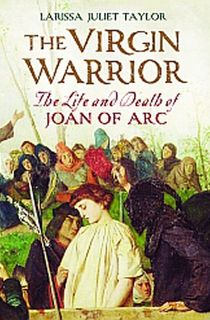
The Virgin Warrior
Larissa Juliet Taylor examines Joan of Arc as a girl, a leader, and a warrior, paying respect to how exceptional and anomalous she really was. Taylor portrays the poor peasant girl who felt so moved by her visions that she fought to get an audience with the highest royal. Joan of Arc’s willpower was truly unique, allowing her to reenergize the French army and create terror in the hearts of the British.
This biography emphasizes Joan’s character; her charisma, confidence, and determination, that made her so special and made her an enduring icon.
Historical Fiction
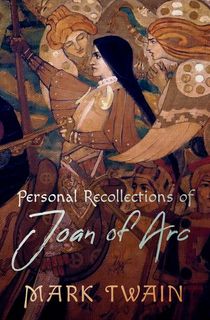
Personal Recollections of Joan of Arc
Personal Recollections of Joan of Arc is the final book by Mark Twain and, in the author’s own opinion, the best. The book is structured as a fictional recording of the saint’s life, as recalled by her page and secretary, the Sieur Louis de Conte.
The book tells the entire story of her life, from her childhood in the village of Domrémy, to her visions and divine inspiration, all the way to her dramatic and tragic trial. This is a highly moving and engrossing tale of the teenage hero, over the 19 years that comprised her far too short life.
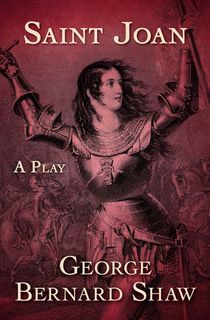
Saint Joan
Shortly after Joan of Arc was canonized in 1920, renowned Irish playwright George Bernard Shaw first put on a performance of his famous play, Saint Joan. Shaw’s portrayal of a rebellious yet naive teenage Joan has prevailed as a memorable and inspiring female role in theatre. In the published version of the play’s text, Shaw added a preface and reflections on the saint and her life and influence, creating an even deeper examination of the woman who inspired his only tragedy play.
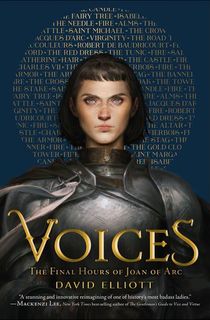
Voices
Using various kinds of verse, author David Elliot tells Joan’s life story as observed by the people and objects that surrounded her, such as her family, cows, candles, and clothing. Elliot addresses questions of gender and power with beautiful and haunting writing. If you are looking to get a good introduction to the figure of Joan of Arc and to have a unique reading experience, this is the perfect book.
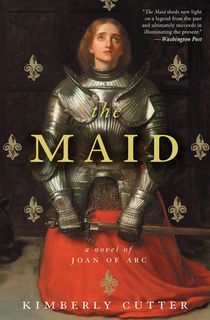
The Maid
Author Kimberly Cutter expands on the confirmed details of Joan of Arc’s life in this historical novel. Cutter draws a clear picture of the smaller, familial battles that Joan had to fight before she fought real, bloody battles at war. The author enriches Joan’s life by engaging with her relationships and farm experiences. The scenes of battle are thrilling and read as excitingly as an action novel. Overall, this is a profoundly beautiful, invigorating, and heartbreaking work.
